Discover 35 hidden attractions, cool sights, and unusual things to do in Livorno (Italy). Don't miss out on these must-see attractions: Fortezza Vecchia, Mercato Centrale, and Monument of the Four Moors. Also, be sure to include Dutch German Church in your itinerary.
Below, you can find the list of the most amazing places you should visit in Livorno (Tuscany).
Table of Contents
Fortezza Vecchia
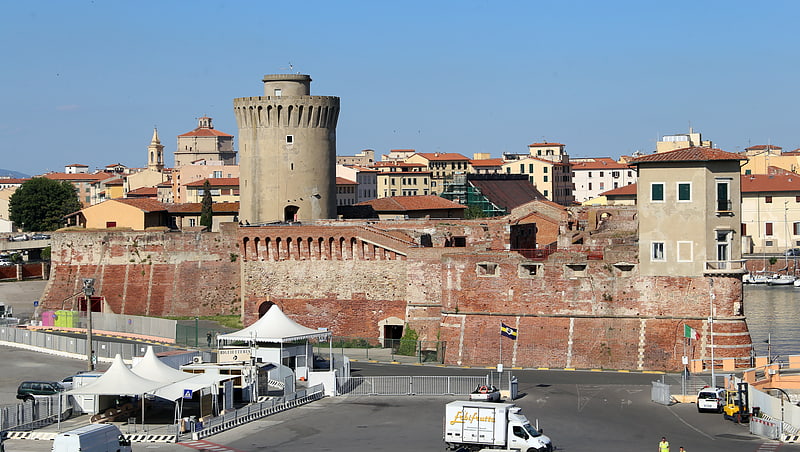
Fortress in Livorno, Italy. The Old Fortress of Livorno is a castle in Livorno, Italy. The Old Fortress is a successor building to a medieval fort built by the city of Pisa in the location of an older keep built by Countess Matilda of Tuscany in the 11th century. The 11th century tower was incorporated inside the fort built by the Pisans. The castle has been described as a "symbol of Medicean Livorno". The fort is located at the Medicean Darsena, or old dock of the port of Livorno, built by the Medici family. The ceremony proclaiming Livorno a city took place inside the fortress on 19 March 1606.[1]
Address: Piazzale dei Marmi, 57126 Livorno
Mercato Centrale

The Mercato delle vettovaglie, also known as Mercato Centrale or Mercato Coperto, rises on the Aurelio Saffi docks along Livorno's Fosso Reale.
It is one of the most interesting Leghorn buildings of the second half of the 19th century, in which, moreover, the influence of the great 19th-century iron and glass architecture can be felt.
Address: Via Buontalenti, 57123 Livorno
Monument of the Four Moors

Also known as: Monumento dei Quattro mori
Statue by Giovanni Bandini and Pietro Tacca. The Monument of the Four Moors is located in Livorno, Italy. It was completed in 1626 to commemorate the victories of Ferdinand I of Tuscany over the Ottomans.
It is the most famous monument of Livorno and is located in Piazza Micheli. Created by Pietro Tacca, the monument takes its name from the four bronze statues of "Moorish" slaves that are found at the base of an earlier work consisting of the statue of Ferdinando I and its monumental pedestal.[2]
Address: Via Grande, 214, 57123 Livorno
Dutch German Church
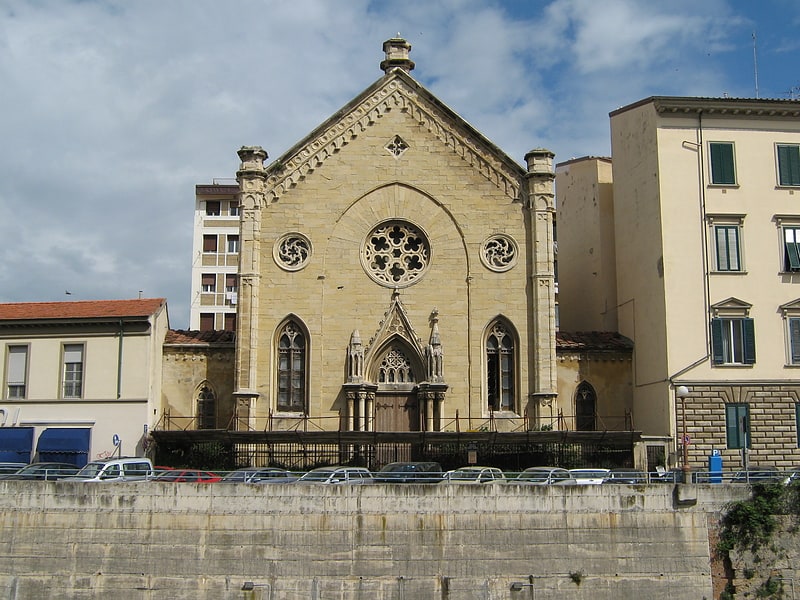
Also known as: Tempio della Congregazione olandese alemanna
Protestant church in Livorno, Italy. The Dutch German Church in Livorno, Italy, is on the stretch of the Fosso Reale canal that runs between Piazza della Repubblica and Piazza Cavour.
The Protestant church bears witness to the intercultural climate that once reigned in the city of Livorno. Since the second half of the 20th century, however, the church has been closed to the public and practically abandoned, and is now in need of major restoration work. The risk of collapse to which the building is dangerously exposed was already reported in 2005 by the vice president of the consistory of the Congregation, Ennio Weatherford.[3]
Stadio Armando Picchi
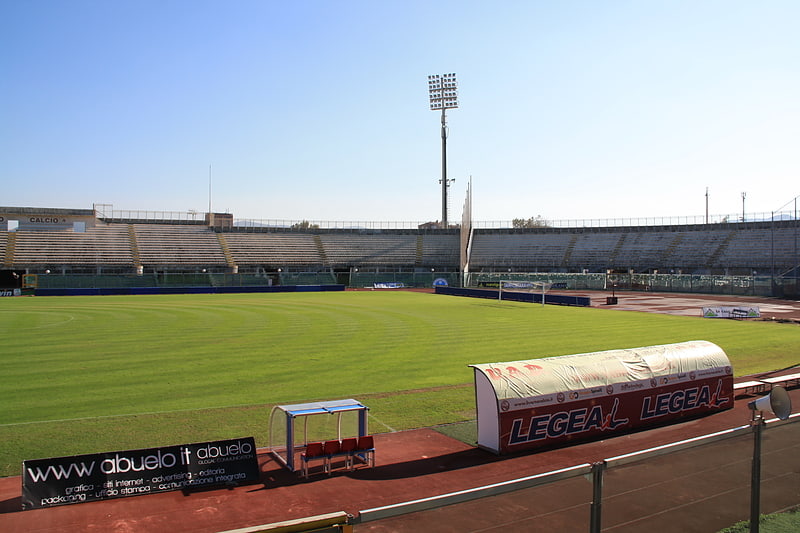
Multi-purpose stadium in Livorno, Italy. The Stadio Armando Picchi is a multi-purpose stadium in Livorno, Italy.
A.S. Livorno Calcio originally used the Villa Chayes Stadium, part of the nearby the Naval Academy, for matches but when the city team was promoted to the Serie A in 1928-29 Divisione Nazionale a new and larger facility was required.[4]
Address: Piazzale Montello 14, 57128 Livorno
Teatro La Gran Guardia
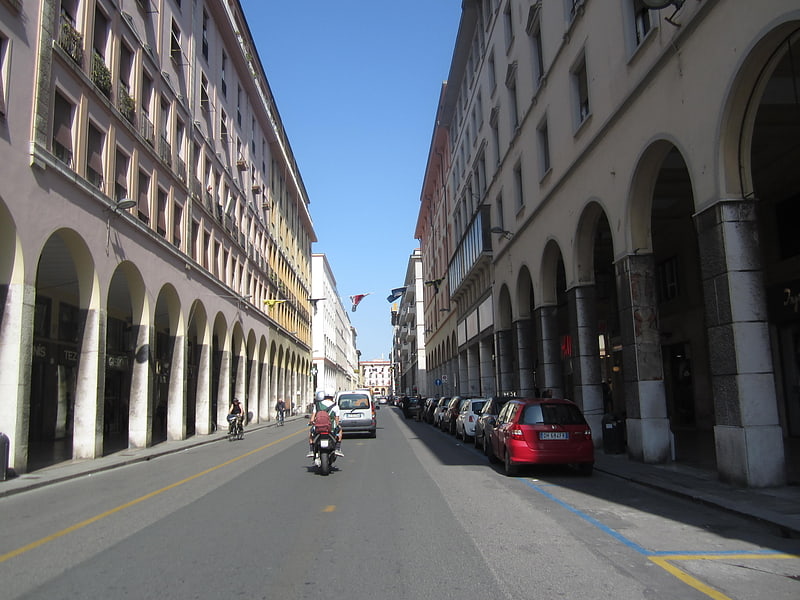
Teatro La Gran Guardia is the main theatre of Livorno, Italy, opened in 1955.[5]
Cala del Leone

Cala del Leone is an inlet on the Livorno waterfront, located between Calignaia and the Torre del Romito promontory, where stands the imposing castle that was owned by Sidney Sonnino and his heirs. The picturesque landscape and nature make many visitors venture there, especially in summer.
The name was derived from Leone De Renzis Sonnino, grandson of Sidney Sonnino, who inherited the property in 1922 on condition that he take the double surname.
Address: Cala del Leone, 57128 Livorno
San Giovanni Battista
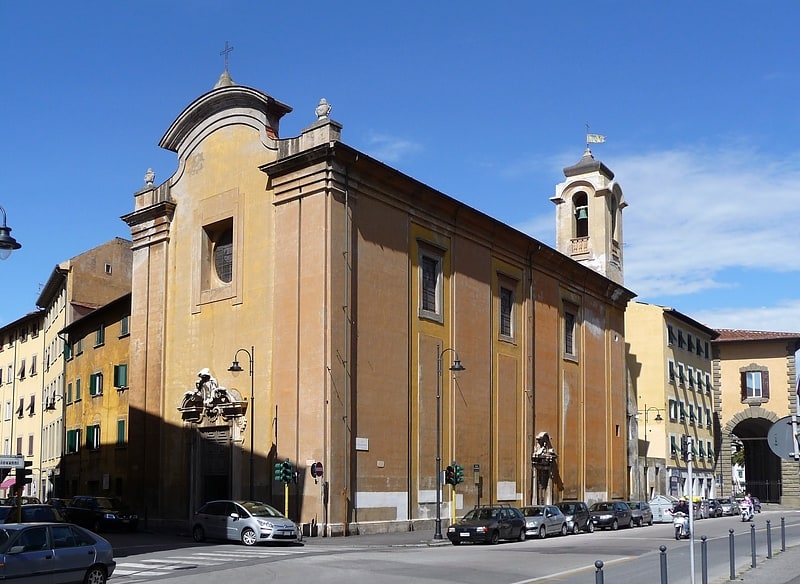
San Giovanni Battista is a Baroque-Mannerist style, Roman Catholic church located at the crossing of Via San Giovanni and Via Carraia in central Livorno, region of Tuscany, Italy.[6]
Address: Via Carraia 2, 57123 Livorno
Santa Caterina da Siena
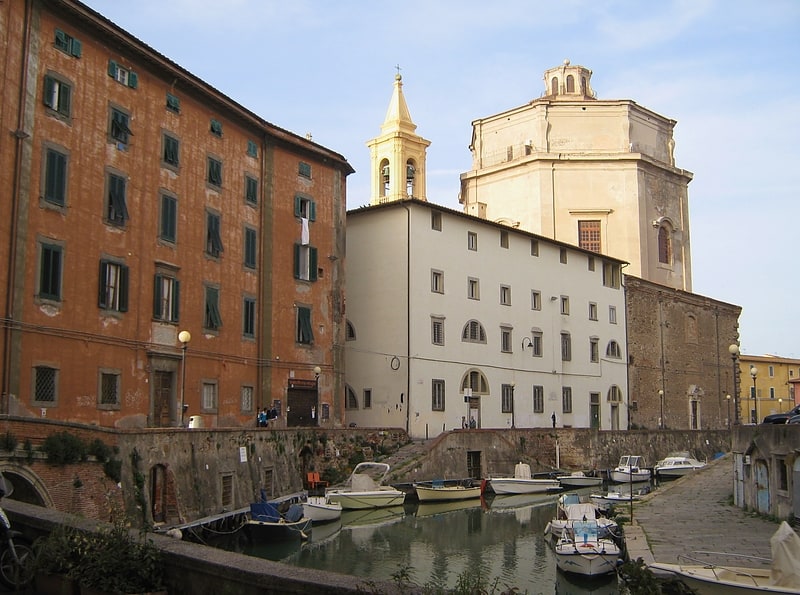
Also known as: Chiesa di Santa Caterina
Catholic church in Livorno, Italy. Santa Caterina da Siena is a Baroque architecture, Roman Catholic church in the district Venezia Nuova central Livorno, region of Tuscany, Italy. It stands in front of the Piazza dei Domenicani. The church is notable for its tall octagonal dome and lantern rising above a rough, unfinished rectangular base.[7]
Synagogue of Livorno
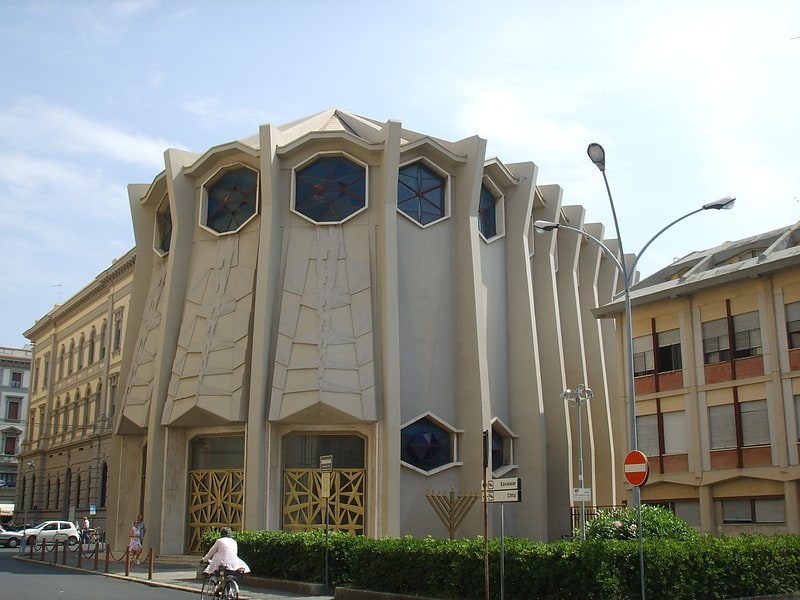
Also known as: Sinagoga di Livorno
Synagogue in Livorno, Italy. The Synagogue of Livorno is a historic synagogue in Livorno, Italy.[8]
Address: Via del Tempio, 57123 Livorno
Livorno Lighthouse
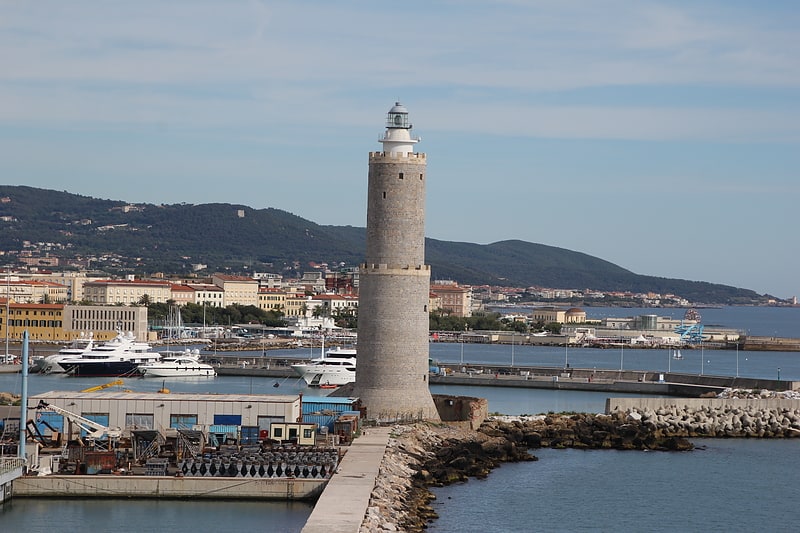
Also known as: Fanale di Livorno
Lighthouse in Livorno, Italy. The Livorno Lighthouse is an active lighthouse located at the south entrance of the Port of Livorno in Tuscany on the Ligurian Sea.[9]
Chiesa di San Ferdinando
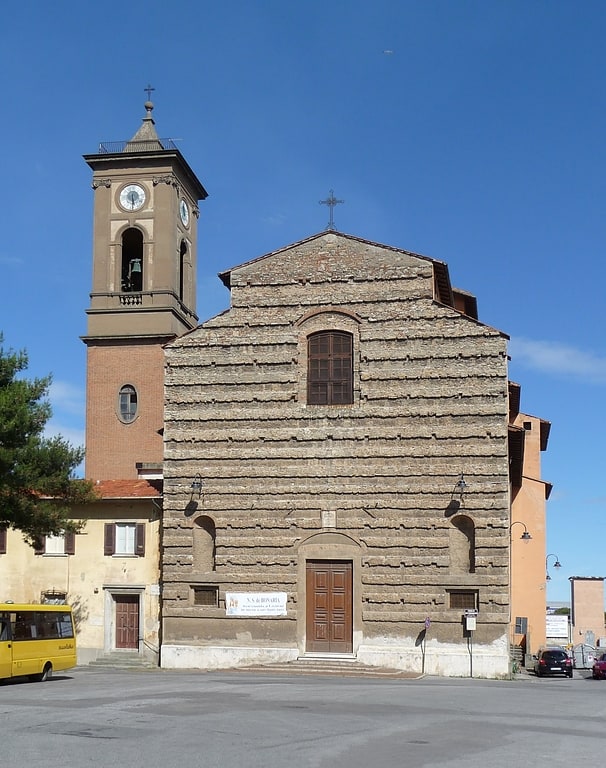
San Ferdinando is a Baroque style, Roman Catholic church located in Venezia Nuova district next to Piazza del Luogo Pio in Livorno, region of Tuscany, Italy. It is also called San Ferdinando Re or the Church of the Crocetta. Nearby is the deconsecrated church of Sant'Anna.[10]
Address: Piazza Anita Garibaldi, 1, 57123 Livorno
Tre Ponti

Beach, Surf spot
Address: Viale di Antignano, 27, 57128 Livorno
Sanctuary of Montenero

Also known as: Santuario della Madonna delle Grazie
Shrine in Livorno, Italy. The Shrine of Our Lady of Grace, also known as Sanctuary of Montenero, is a religious complex on the Monte Nero Livorno Hills, in Livorno, central Italy.
The complex, elevated to the rank of Basilica and maintained by Vallumbrosan monks, is devoted to Our Lady of Grace of Montenero, patron of Tuscany. It also includes a rich gallery of votive offerings.[11]
Santa Maria del Soccorso
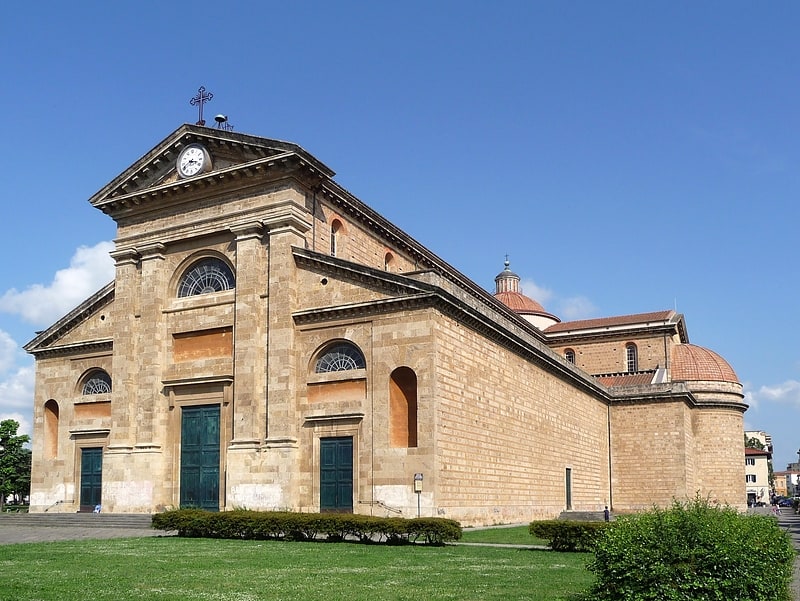
Catholic church in Livorno, Italy. Santa Maria del Soccorso is a Neoclassical style, Roman Catholic, Marian votive church in central Livorno. The tall brick church facade is located scenically at the end of Via Magenta, and has a park surrounding it. In front is a Monument to Fallen Soldiers in the first World War.[12]
Santa Caterina da Siena
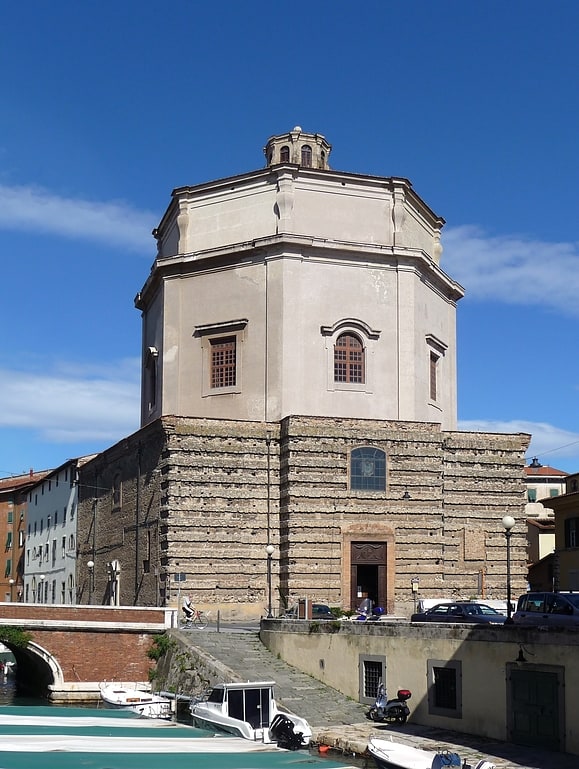
Santa Caterina da Siena is a Baroque architecture, Roman Catholic church in the district Venezia Nuova central Livorno, region of Tuscany, Italy. It stands in front of the Piazza dei Domenicani. The church is notable for its tall octagonal dome and lantern rising above a rough, unfinished rectangular base.[13]
Address: Via del Forte San Pietro 3, 57123 Livorno
Port of Livorno
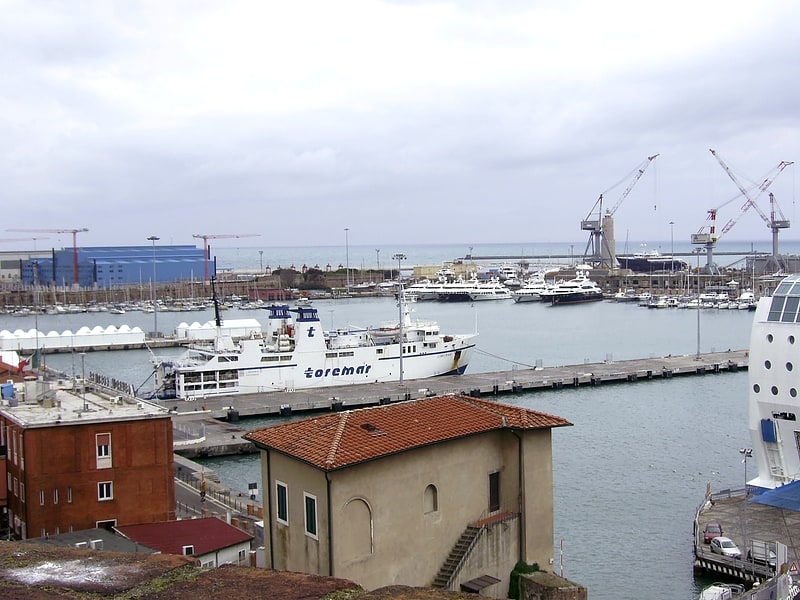
Also known as: Porto di Livorno
Seaport in Livorno, Italy. The Port of Livorno is one of the largest Italian seaports and one of the largest seaports in the Mediterranean Sea, with an annual traffic capacity of around 30 million tonnes of cargo and 600,000 TEU's.
The port is also an important employer in the area, with more than 15,000 employees who provide services to more than 7,000 ships every year.
The Port of Livorno is considered a major Italian port along the Tyrrhenian Sea Corridor, capable of handling all kinds of vessels (LoLo, RoRo, liquid bulk, dry bulk, cruise ships, ferryboats). The port mainly serves Tuscany, Emilia-Romagna, Umbria and Marche regions of Italy.[14]
Old English Cemetery
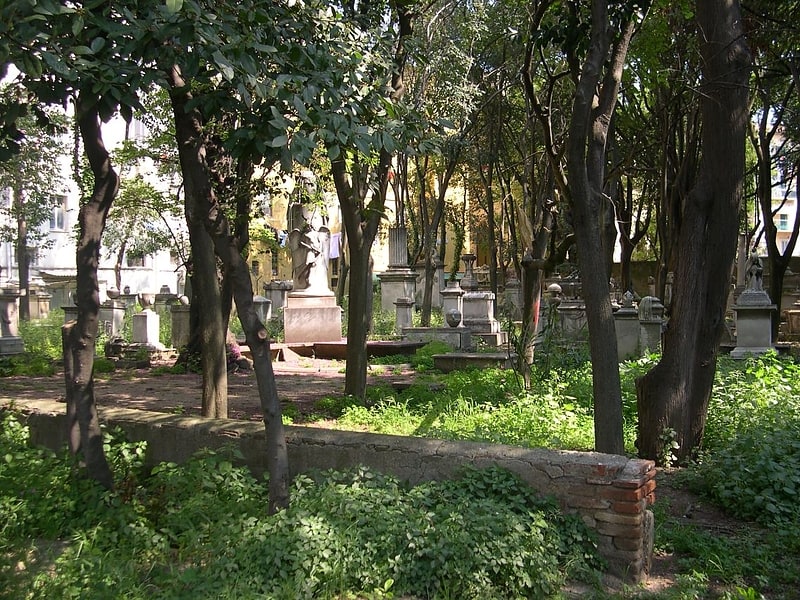
Also known as: Antico cimitero degli inglesi
Cemetery. The Old English Cemetery is a cemetery in Livorno, central Italy, located on a plot of land near the Via Verdi, close to the Waldensian Church and to the formerly Anglican church of St. George. It is the oldest Protestant cemetery in Italy.[15]
Address: Via Giuseppe Verdi 53, 57126 Livorno
Fortezza Nuova

The New Fortress is a fortification of Livorno.
It represents the ancient "Baluardo di San Francesco" of the pentagonal city designed by Bernardo Buontalenti and originally incorporated the "Baluardo di Santa Barbera" as well, until it was partly dismantled to make way for the second accretion of the Venezia Nuova quarter. It was part of the defensive system located to the northeast of the city represented by the symmetrical Fort San Pietro d'Alcantara and the Rivellino di San Marco, located between the two fortifications, where the ancient Porta San Marco (Dominican Square) opened.
Address: Scali Fortezza Nuova, 4-6, 57123 Livorno
Italian Naval Academy
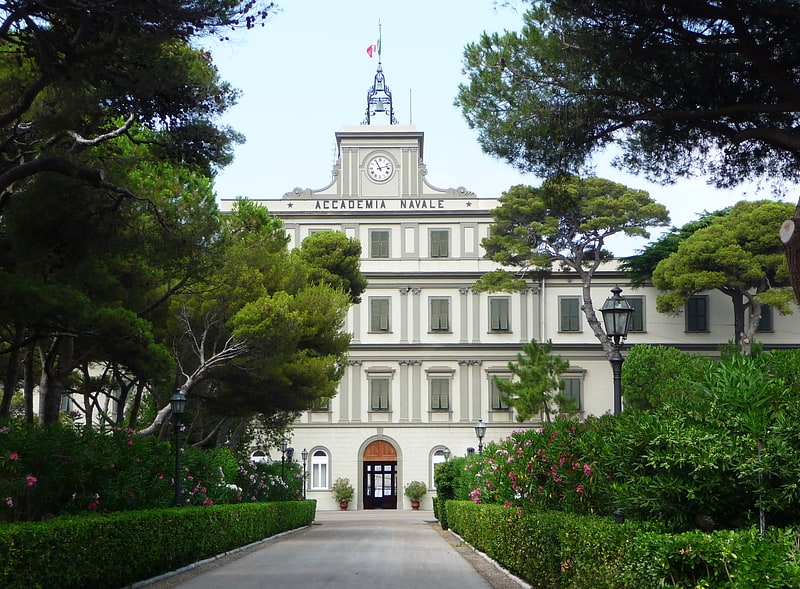
Also known as: Accademia navale
University in Livorno, Italy. The Italian Naval Academy is a coeducational military university in Livorno, which is responsible for the technical training of military officers of the Italian Navy.[16]
Address: Viale Italia 72, 57127 Livorno
Casa natale di Amedeo Modigliani
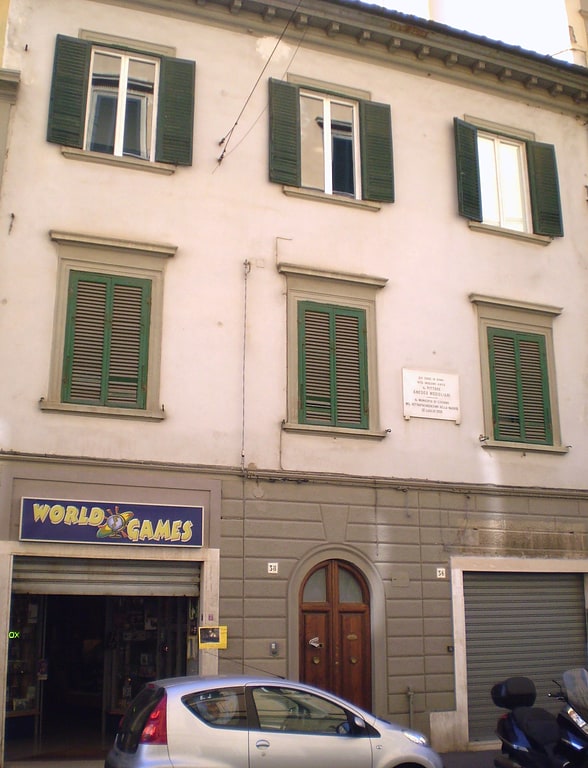
The Birth of Amede Modigliani is a museum located in Livorno at Via Roma 38 and devoted to the painter Amedeo Modigliani, who was born here. The Guustalla Centro Art in Livorno is organized.
Address: Via Roma, 38, 57126 Livorno
Terrazza Mascagni

The Mascagni Terrace is one of Livorno's most elegant and attractive places and is located on the waterfront at the edge of Viale Italia. The original core was built beginning in the 1920s, but the terrace was greatly expanded in the immediate postwar period, when it was named after Livorno composer Pietro Mascagni.
Orto Botanico del Mediterraneo

The Orto Botanico del Mediterraneo is a botanical garden located on the grounds of the Museo di storia naturale del Mediterraneo at Livorno, Tuscany, Italy. It contains groupings of plants typical to various locations along the Mediterranean Sea, with each group in a specific soil.[17]
Leopoldino aqueduct
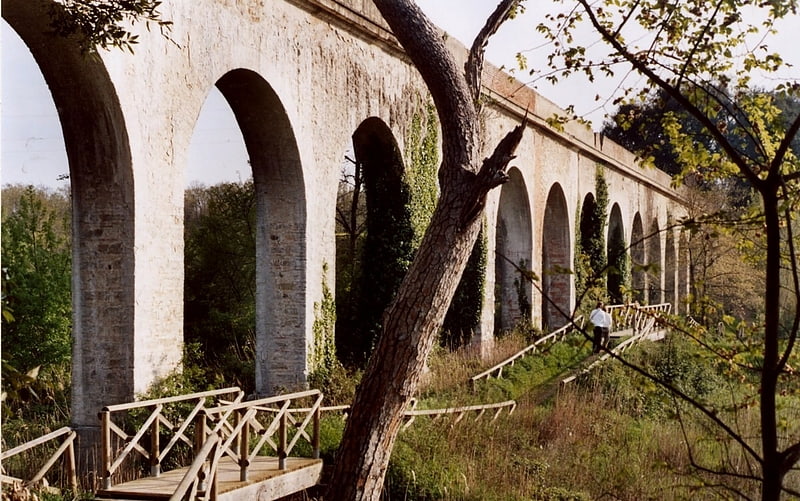
The Acquedotto Leopoldino and the neoclassical cisterns of Livorno were part of a sophisticated scheme to not only provide water to Livorno, but also clean it. The scheme was centred on the 18 km long aqueduct which runs south to north bringing water to the city from Colognole. This feat of engineering first carried water to the city in 1816, long before its completion. It was Livorno's sole water supply until 1912, still serving some areas of the city.
The aqueduct was commissioned in 1792 by Ferdinand III, Grand Duke of Tuscany. Construction began in 1793 to plans drawn by the architect Giuseppe Salvetti, replacing an earlier aqueduct constructed in the 16th century by Ferdinand de' Medici. Work stopped in 1799 on the death of Salvetti and, because of the political difficulties and upheavals in Tuscany caused by the first disruptive phases of the Napoleonic occupation of Tuscany, did not resume until 1806, when Maria Louisa, regent of Etruria, acting for her infant son, appointed the architect Riccardo Calocchieri to supervise the work. Later, in 1809, during the French occupation of Tuscany and reign of Elisa Bonaparte, Poccianti was appointed by the newly formed "Comune of Livorno" to oversee the project and under his direction work continued until 1824, the date usually considered as that of the aqueduct's completion. However, modifications were always being implemented, and after Poccianti's death in 1858, the project was continued by his successor Angiolo della Valle.
The aqueduct crosses valleys in the Livorno Hills, supported on great arches which tower above the forests and slopes of macchie below.[18]
Museo Civico Giovanni Fattori

Specialty museum, Museum
Address: Via San Jacopo In Acquaviva, 65, 57127 Livorno
Cisternoni of Livorno
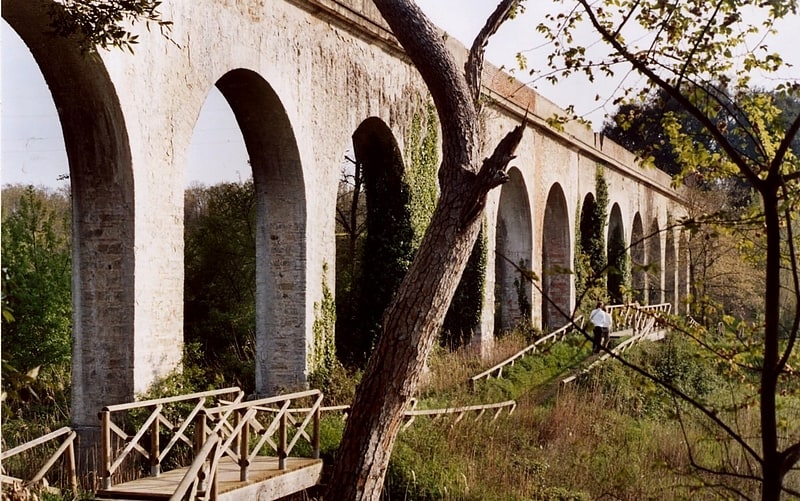
Also known as: Acquedotto Leopoldino
Building. The Cisternoni of Livorno are a series of three large buildings in the neoclassical style at Livorno, in Tuscany, Italy. They were constructed between 1829 and 1848 as part of a complex of purification plants and storage tanks to the Leopoldino aqueduct; a fourth cisternone planned at Castellaccia was never built. The cisternoni, literally "great cisterns", provided Livorno — a city that is still today one of the principal ports of the Mediterranean — with fresh and, more importantly, clean water throughout the 19th and 20th centuries.
Designed by the architect Pasquale Poccianti, the cisternoni are architecturally important, as they represent the advent of an aesthetically considered approach to the design of utilitarian public work. This movement, whose followers are sometimes known as "Utopians", was pioneered by such architects as Étienne-Louis Boullée and Claude-Nicolas Ledoux at the close of the 18th century. The movement resulted in great palaces and temples of industry and commerce, their palatial and temple-like facades concealing the mundane reality of their true use, which were to dominate many towns and landscapes from the 19th century onwards.[19]
Villa Fabbricotti
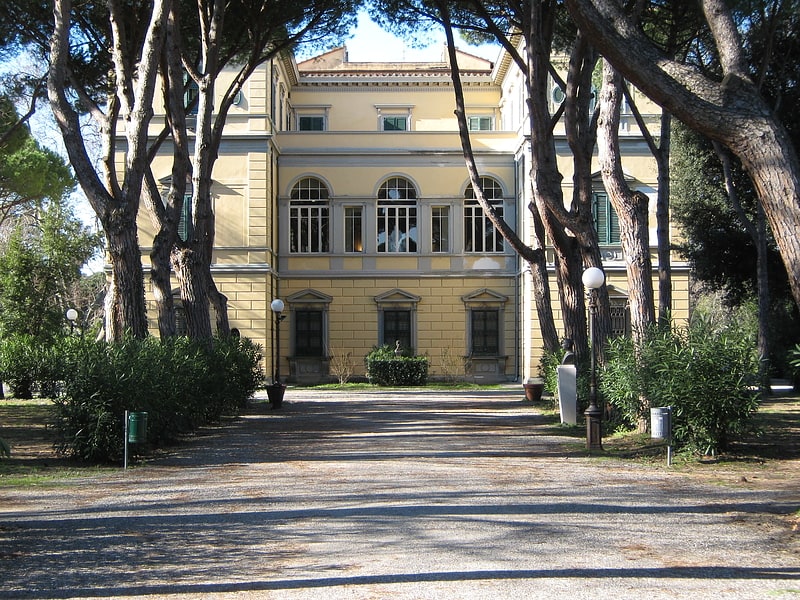
Villa Fabbricotti in Livorno is located at Viale della Libertà, 30. It is the main headquarters of the Labronica Library.
Faro della Diga Curvilinea
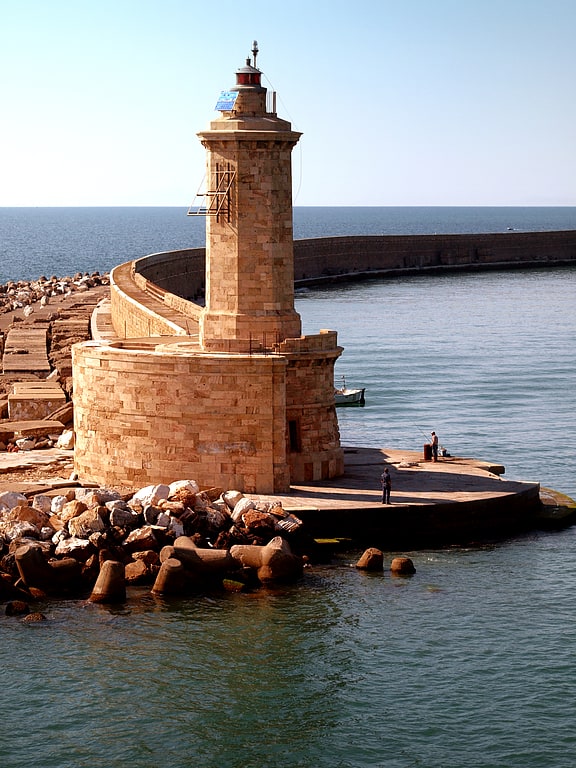
Lighthouse
Ponte di San Giovanni Nepomuceno
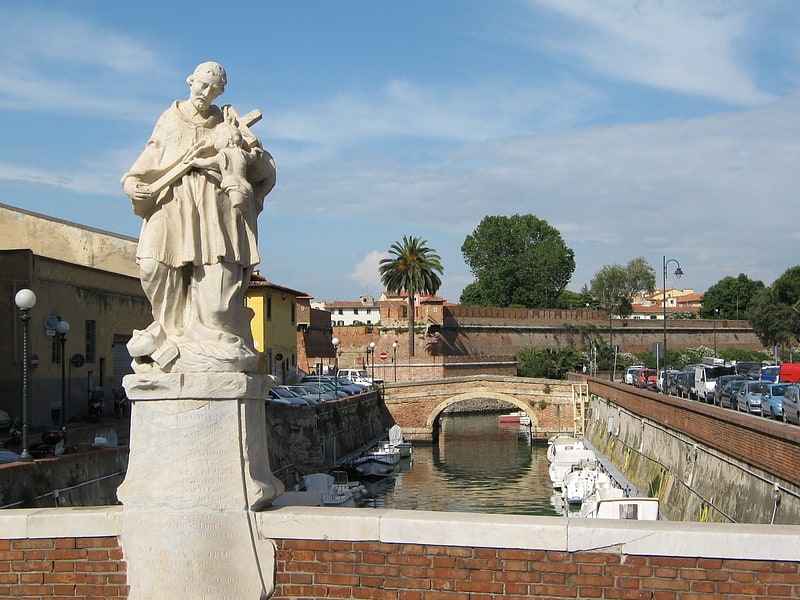
The Bridge of San Giovanni Nepomueno is located in Livorno, along Via della Madonna.
Piazza della Repubblica

Piazza della Repubblica is one of the largest and undoubtedly among the most characteristic squares in Livorno. In fact it forms a bridge between the city center and the nineteenth-century neighborhoods that sprang up beyond the perimeter of the Fosso Reale, so much so that it is identified by some as the widest bridge in Europe.
A number of important streets, such as Via Grande, Via Garibaldi, and Via de Larderel (see the Stradario di Livorno entry), which in the 19th century represented the city's main thoroughfare, converge here. The square also constitutes a perspective telescope toward the Fortezza Nuova and the Venezia Nuova district, with suggestive views of the Fosso Reale.
Address: Piazza Della Repubblica, Livorno
St. Sebastian Church

Also known as: Chiesa di San Sebastiano
The church of San Sebastiano is located in the center of Livorno, in the area between the Duomo and the Porto Mediceo. A testimony to the presence of the Barnabite order in the city, today it appears to be entrusted to the Institute of Christ the King High Priest.
Address: Via S. Francesco, 26, 57123 Livorno
Chiesa Santi Pietro e Paolo

Church, Sacred and religious sites
Address: Piazza Santi Pietro e Paolo, 28, 57126 Livorno
Museo diocesano "Leonello Barsotti"

The Diocesan Museum Leonello Barsotti is a Museum of Sacred Art of Livorno.
Teatro Goldoni
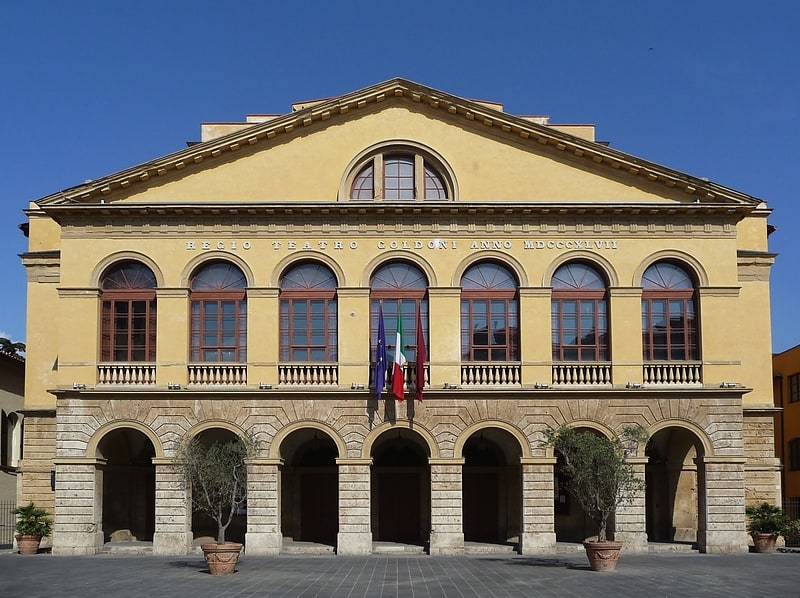
Theater, Concerts and shows
Address: Via Goldoni 83, 57125 Livorno
Chiesa della Madonna

The Church of Our Lady, formally named after Saints Mary, Julia and Francis, stands on the street of the same name in the heart of Livorno, a few meters from the United Greek Church and the remains of the Armenian Church.
Held by the Franciscan Friars Minor, the church houses the altars of a number of foreign nations inside, constituting one of the earliest important reminders of the city's cosmopolitan past.
Address: Via della Madonna, 22/a, 57123 Livorno